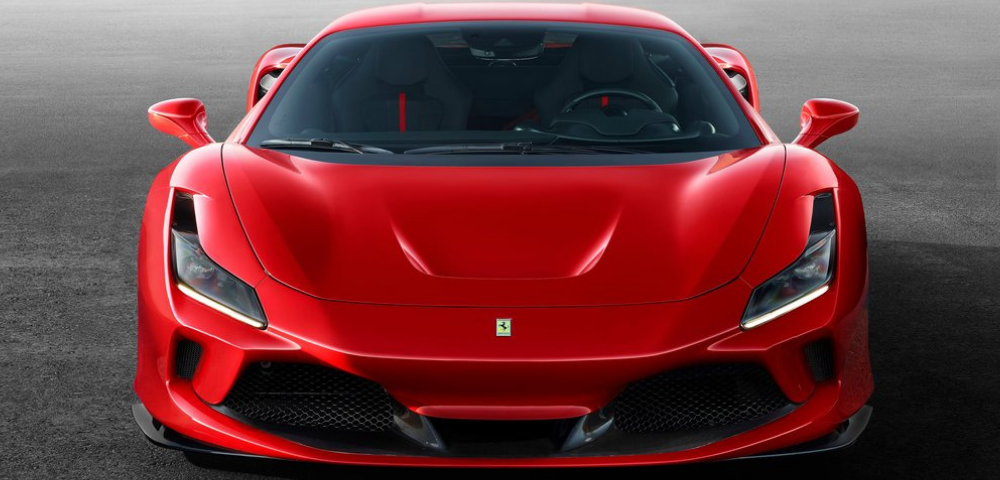
Ferrari needs no introduction. The iconic Italian brand is synonymous with high-performance cars and with over 70 years of racing heritage, one may argue that Ferrari has perfected the art of making some of the finest cars on the planet. And now, they’ve done it again. Last week, Ferrari revealed their newest two-seater Berlinetta - the F8 Tributo - a successor to the 488 GTB.
When the 488 came out, the automotive community had mixed feelings about it. The opinions have been quite polarizing for the F8 as well, with some people finding the design to be one of the best out there, and some feeling that it looks like all the modern Ferraris had a baby. Like it or not though, it is definitely striking.
The front is elegant yet has a distinct aggressiveness to it that’s common in all current-gen Ferraris, and the rear looks like the Ferrari 812 Superfast & the Honda NSX’s lovechild. Controversy aside, we feel that the car will look much better in person, as is the case with a lot of these new cars including its predecessor, the 488 GTB.
In the interiors department, it’s all standard affair. The dashboard design has remained largely the same since the 458 in terms of design, but every single panel inside has been redesigned. There’s a new 7” touchscreen display that sports the latest version of Ferrari’s HMI (Human Machine Interface) as well. This seems like a much-needed upgrade considering that the 488’s cabin was getting slightly dated compared to its competition.
The car has several design elements that pay tribute to iconic Ferraris like the 1975 308 GTB and the 1987 Ferrari F40, hence the name Tributo. For instance, the Lexan rear screen that showcases the heart of this car, its engine, has louvres that are inspired by the F40. And like the 308 GTB, the F8’s spoiler wraps around its twin tail lights. And it’s not like these design elements are there for pure show either. The F40-inspired louvres? They help to extract hot air from the engine compartment without impacting the spoiler’s efficiency. And the spoiler itself is designed in a way that aids downforce.
Speaking of downforce, Ferrari has worked a lot on the F8’s aerodynamics. As a result, it shares several parts with the more hardcore 488 Pista. For instance, it has two dynamic engine air intakes positioned on either side of the spoiler. The S-Duct that debuted in the 488 Pista has been worked upon as well which has helped get a 15% increase in overall downforce compared to the outgoing model. The front headlights are narrower to accommodate additional brake cooling intakes which increases braking performance without having to opt for a new larger, heavier and costlier braking system.
While the engine shares its DNA with the 488, the F8 Tributo is quicker. The 3.9L twin-turbo V8 produces 711 horsepower and 770 Nm of torque. That’s good for a 0-100 km/h time of just 2.9 seconds. Unrestricted, it will go on to do 340 km/h - that’s 10 km/h more than the model it replaces. It’s also half a second quicker to 200 km/h clocking a time of 7.8 seconds. To put that into perspective, it takes a standard Mercedes E220d the same time to reach 100 km/h!
Despite the similar mechanicals and the similar styling, saying that the 488 and the F8 are the same cars would not be fair. Sure, the design is more evolutionary than revolutionary, almost as if it were a facelift of the 488. And the engine, gearbox, braking system, aero and other bits are borrowed from other cars in the Ferrari stable. But it’s the bits that aren’t visible that matter in a car. Petrolheads often say that cars like the 911 Carrera S or a Cayman GT4 are true driver’s cars because you have usable power. We often say that it isn’t the numbers on paper that matter, but the on-road behaviour. If that’s the case, then advancements in aero, braking, cooling and suspension are what would really set a car apart from its competition. And that is exactly what Ferrari has done with their newest model.
In fact, marginal performance gains seem to be a trend of modern supercars. The new Huracan Evo, for example, is quite similar to the Huracan Performante. And this wasn’t the case a few years back. The Lamborghini Gallardo and Ferrari 458 were completely different cars from the ones they replaced with massive performance differences between generations. When the Huracan replaced the Gallardo you could really see and feel the changes - on paper and on the road. When the 458 replaced the F430 the performance differences were so vast that it was like you were comparing cars of two different segments. This begs the question - have we reached a saturation point for supercar innovation?
Ferrari has proven that the Indian market is quite important by launching cars quite promptly in India after their official reveal. Likewise, the F8 Tributo is expected to launch in India in early-2020, with deliveries following soon after.
TAGS : ferrari / ferrari f8 / tributo / geneva motor show / geneva / supercar 2019